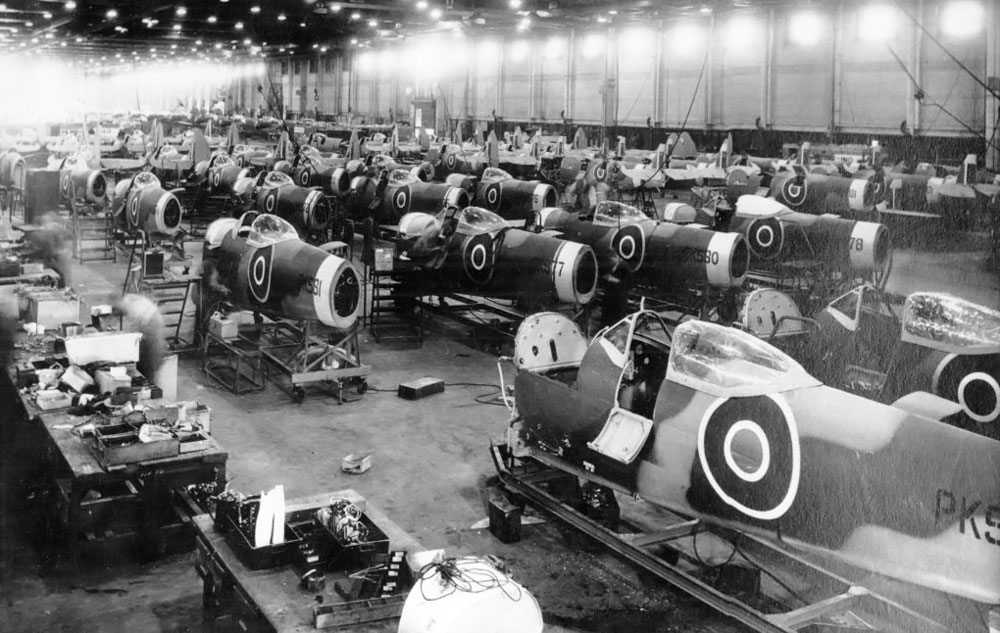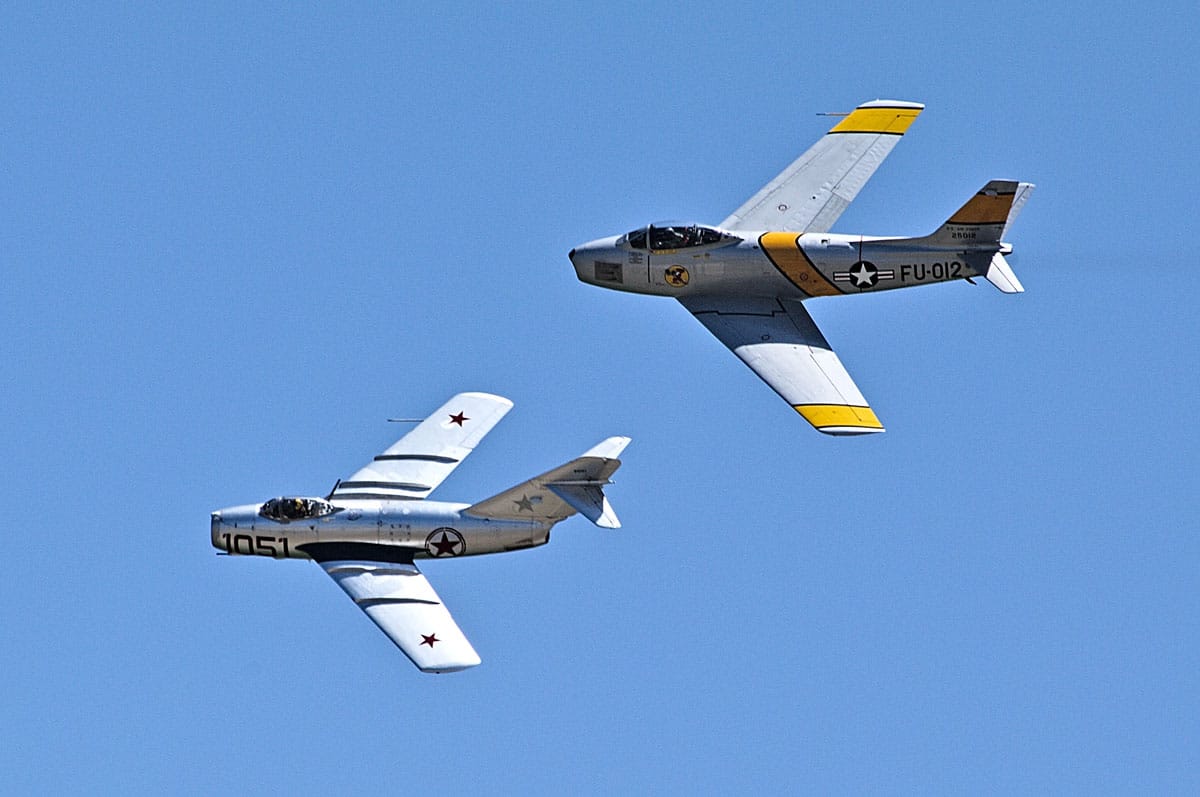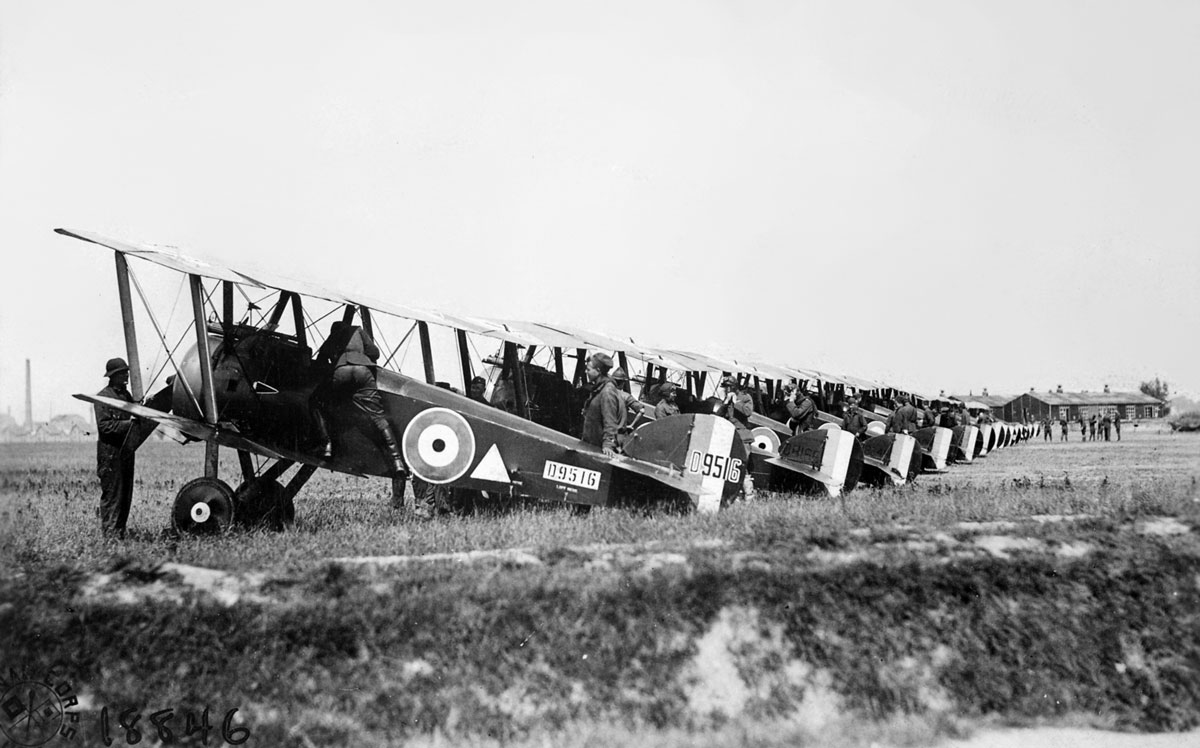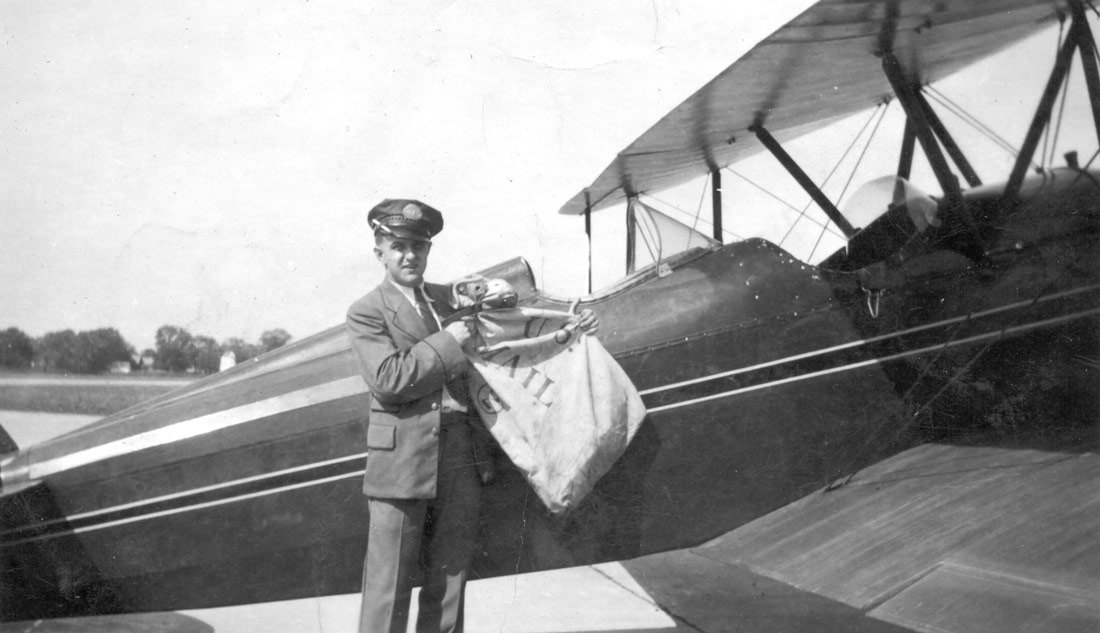Octave Chanute’s Contributions Had a Far-Reaching Impact on Aviation
Most people who have as profound an impact on an area of study or an industry like Octave Chanute did on aviation tend to spend most or all of their lives involved in that pursuit. But for Chanute, though he became interested in aviation at a young age, it wasn’t until his late 50s that he was able to start actually pursuing his interest in aviation, and his 60s before he began the flying experiments and glider testing for which he is most often remembered. But in the roughly 21 years he was heavily involved in aviation, he had an immense influence on the field of study just as it was preparing to take flight. His engineering and design work was highly detailed and well documented, and among others, he served as a mentor to the Wright Brothers, providing guidance, information, and advice as they moved toward their monumental first flight at the end of 1903.
And though it’s tempting to jump past the first two-thirds of Chanute’s life to focus on his time in aviation, it’s important to understand how that part of his life allowed him to make such incredible contributions to aviation. So, as with most stories, let’s start at the beginning.
Octave Chanute’s Early Life
Octave Chanute was born in 1832, in Paris (France, and not Paris, Idaho; Paris, Maine; Paris, Texas; or any of the other many Paris pretenders.) In 1838 he immigrated to the United States as a young boy with his father Joseph Chanute, a professor at the College de France. His father made the move in order to accept the position as Vice-President at Jefferson College in Louisiana. Young Octave Chanute was able to attend private schools in New York, and in 1848, at the relatively young age of 16 and already showing a talent for engineering, he began training as a civil engineer.
He reportedly began working his first job in 1849, as a member of a surveying crew working with the Hudson River Railroad. From this position, he worked his way up through a series of railroad engineering positions, each with increasing responsibility. It’s a little after this time period, in 1856, that Chanute apparently first became interested in aviation when he watched a balloon take off in Illinois.
Octave Chanute’s Incredible Contributions to Railroads
I’ve had a little trouble tracking down exact dates, but from what I can tell, Octave Chanute retired from official railroad work in 1883, leaving a position with Erie Railway. He did, however, continue to serve as an independent engineering consultant until 1889, when he moved on from that as well to focus solely on aviation. Now, during his time in the railroad industry, Chanute had a large influence and accomplished an impressive amount.
Among his accomplishments was designing and construction of the Chicago Stockyards (1865) and Kansas City Stockyards (1871), the two biggest stockyards in the US, and the Hannibal Bridge (1869), the first bridge across the Missouri River. The bridge, in particular, helped establish Kansas City as the dominant city in that region.
But perhaps his most important contribution to railroads was helping to preserve them. Chanute was concerned by how often railroad ties needed to be replaced, which was a contributing factor to the clearing of American forests. So he invented a procedure that used an antiseptic to pressure treat wooden railway ties so they would last longer during commercial use. The increase in the lifespan of the railroad ties and savings to railway companies was significant enough that he was able to convince them to adopt this process. Chanute also discovered the railway date nail in Europe and introduced it to the US as a way to track the age and longevity of the railroad ties and other wooden structures.
Progress in Flying Machines and Turning to Aviation
Spending his lifetime as an engineer provided Chanute with two very important advantages when it came to aviation. First, both his railroad related inventions and engineering jobs left him financially well off, and able to fund both his research and the building of experimental gliders and aircraft. And second, it greatly enhanced Chanute’s ability to obtain precise results and work tirelessly on any project he put his mind to.
So, aided by his background in engineering, Chanute began by collecting all the available flight test and experimentation data from around the world. He then added to it with his own insight as a civil engineer, and published his finding in a series of articles from 1891 to 1893 in The Railroad and Engineering Journal. These were then re-published in 1894 as a complete manuscript, Progress in Flying Machines. At that time, this was the most complete, exhaustively detailed survey of global aviation research anyone had produced.
Chanute was very generous and shared his work with all who requested it. He corresponded with aviation pioneers and researchers from around the world, including Otto Lilienthal, Louis Bleriot, Alberto Santos-Dumont, Lawrence Hargrave and John J. Montgomery. Eventually, after they read his book Progress in Flying Machines, Chanute also began corresponding with the Wright Brothers, and we’ll focus more on that a little later.
Testing and Building Gliders
Octave Chanute felt it was premature to install a motor onto a flying machine until reliable stability could be obtained. Safety, balance, and stability were his initial goals, and with this in mind, in December of 1895, Chanute met with Augustus Herring. A fellow engineer, Herring had already been conducting aviation experiments for some time. Together, the two of them developed a multi-wing glider design. In order to test the stability of the design, they developed a kite version of it first. The kite proved to incredibly stable, even in gusty winds, so they decided to build the glider version, capable of carrying a man.

This multi-wing design represented something new and unknown, so Chanute and Herring also rebuilt a glider previously tested by Herring that was based at least in part on Lilienthal’s glider design. With these two gliders in tow, Chanute and Herring set out for the sand dunes at the south end of Lake Michigan, about thirty miles from Chicago. They were accompanied by two assistants, a Mr. Avery and Mr. Butusov.
Now 64 years old, Chanute decided not to serve as a pilot in any test flights himself, but rather use this opportunity to record flight data and observations as his assistants handled the flying. The Lilienthal style glider was tested first. They made an estimated 100 glides, the longest reaching 116 feet. However, lacking Lilienthal’s years of experience with the design, the glider proved awkward for them to handle. The Lilienthal glider was set aside, and they moved on to the multi-wing glider.1

The multi-wing glider featured six pairs of wings that were trussed together and would pivot from the base on a central frame. The pilot was expected to move only for the purpose of steering, while the wings maintained stability by pivoting back and forth above him. The gigantic glider swerved so violently the first day of testing that they had to adjust the wing placement. The multi-wing glider would go through six additional versions, the changes in each version prompted by data gathered from the flights. After some 200 glides were made with this glider design, they decided it was time to rebuild it using the information they’d obtained.
So in mid-July, after two weeks of tests, they returned to Chicago. Chanute and Herring designed and built three new gliders: a rebuilt multi-wing glider, a new biplane glider, and an “Albatross” glider. Not wanting to waste time, they returned to the sand dunes towards the end of August and started testing the three new gliders.
The Second Phase of Glider Testing

Up first was the re-built multi-wing glider. The wings were now attached to a new frame using ball bearings instead of ordinary pivots, and the wings were trussed together using a Pratt truss.2 This re-built glider proved more successful over a series of glides, more than doubling the results from the previous test flights. And though the glider design was deemed sound, they decided it could benefit from further refinement.
Next, they tested the biplane style glider. Much simpler in construction, it featured a single intersection Pratt truss carrying the two wing surfaces, to which Herring applied a regulating device. The glider was capable of supporting 300 to 400 pounds on the arm bars in the center. This proved to be a very successful design, and hundreds of glides were made in it during the six weeks of testing.

Amazingly, no accidents occurred during the testing of this glider, and towards the end of testing, even some amateurs were allowed to fly it under supervision.

Finally, it was time for the Albatross glider. This glider required both trestle work built down the hill slope and wind blowing straight up the trestle to launch, which limited the flight testing capabilities. Two tests were made, but using ballast instead of a pilot, as they were unsure how stable it would be. The first launch went well, though it didn’t fly very far and some of the ribs in the frame were cracked on landing. They replaced the ribs and launched it again, but an unfavorable wind swung the glider around, and one of the wings struck a tree. The Albatross was broken, and it was decided it was too cumbersome a design to be useful in their flight testing.
This biplane glider, often referred to as the “Chanute-Herring biplane” or “Chanute-Herring biplane glider,” was refined and put through more testing in 1897. All in all, it is estimated that during the glider testing period on 1896-1897, Chanute conducted more than seven hundred successful glider flights.
Meeting the Wright Brothers
The Chanute-Herring biplane glider served as an inspiration for the Wright Bother’s own glider design, and in 1900, Wilbur Wright began corresponding with Octave Chanute after reading Progress in Flying Machines. This correspondence grew into a friendship, with the Wright Brothers seeking advice from Chanute, often incorporating his design suggestions. Chanute even gave them advice on where to stage test flights, telling them to seek out a sandy area with strong prevailing winds, which led them to select Kitty Hawk, North Carolina as their test site. Chanute visited their camp in Kitty Hawk multiple times between 1901 and 1903
 During this period, in 1902, Chanute also tested another glider design, the Three-Surface Oscillating-Wing Folding Glider. The glider was built by an experienced designer named Charles Lamson in Long Beach, California. However, the glider was only tested for a single day in the fall of 1902, with Herring as the sole operator. Apparently not impressed with the results, the glider was put into storage in the Wright Brother’s workshop.
During this period, in 1902, Chanute also tested another glider design, the Three-Surface Oscillating-Wing Folding Glider. The glider was built by an experienced designer named Charles Lamson in Long Beach, California. However, the glider was only tested for a single day in the fall of 1902, with Herring as the sole operator. Apparently not impressed with the results, the glider was put into storage in the Wright Brother’s workshop.
Chanute also served an important role in publicizing the Wright’s experiments, especially in Europe through his overseas contacts. However, in 1905, the Wright Brothers and Octave Chanute had a falling out. Chanute shared his aviation knowledge freely and expected others to follow suit, something that caused friction with the Wrights. They believed their ideas on flight control were unique and were not interested in sharing them. And after seeking a patent on the Wright flying machine, and starting to sue anyone infringing on the patent, Chanute expressed his opinion in a newspaper interview:
“I admire the Wrights. I feel friendly toward them for the marvels they have achieved, but you can easily gauge how I feel concerning their attitude at present by the remark I made to Wilbur Wright recently. I told him I was sorry to see they were suing other experimenters and abstaining from entering the contests and competitions in which other men are brilliantly winning laurels. I told him that in my opinion they are wasting valuable time over lawsuits which they ought to concentrate in their work. Personally, I do not think that the courts will hold that the principle underlying the warping tips can be patented.”
Sadly, in November of 1910, Octave Chanute passed away at the age of 78 after a bout of pneumonia. Though some sources have claimed that Chanute reconciled with the Wrights before his death, or they were working on a reconciliation, aviation historian Simine Short (who wrote a book about Chanute) says this is not the case, though Wilbur Wright did attend a memorial service held in honor of Chanute.
Octave Chanute’s Legacy

It has been reported that during his first decade of flight exploration, Chanute kept his experiments hidden and would even apologize for his interest in flying. He was concerned that those around him might think his passion for aviation was merely the pursuit of a crazed, retired old man. Historians believe this may be one of the driving forces behind his constant need to record and validate each flight attempt. By leaving a detailed record of his thought processes and comparing them with what was successful and unsuccessful in the past, Chanute could validate his work and interest in aviation.
Whatever the reason may be, Chanute’s detailed records and passion for flight resulted in a far-reaching and lasting impact on aviation. The January 1911 edition of Popular Mechanics referred to him as “the father of aviation.” A grand title, to be sure, but after spending a good deal of time researching Chanute it’s one that isn’t undeserved. I think the two things that impress me the most about Chanute’s story are his age and his level of success. He involvement in aviation didn’t begin until his late 50s, and yet he took to it with seemingly limitless energy. He researched, compiled, collected, and shared an incredible amount of information, while also designing gliders and taking part in literally hundreds of glider tests. In a roughly twenty-year time span, he accomplished more than many did in an entire lifetime. And this was after a massively successful career as a railroad engineer, including pioneering work in preserving wood.
Octave Chanute is an astounding figure in aviation, and I feel it fitting to close this article with the final lines from Progress in Flying Machines:
… let us hope that the advent of a successful flying machine, now only dimly foreseen and nevertheless thought to be possible, will bring nothing but good into the world; that it shall abridge distance, make all parts of the globe accessible, bring men into closer relation with each other, advance civilization, and hasten the promised era in which there shall be nothing but peace and good-will among all men.
Footnotes:
1 – Within about 6 weeks of Chanute and Herring moving on from this glider design, Lilienthal was severely injured in a gliding accident, dying from his injuries the following day.
2 – This is thought to be the first use of a Pratt truss in the design of a flying machine.
Sources:
National Aviation Hall of Fame
Books on the Subject:
Locomotive to Aeromotive – Simine Short
A Dream of Wings, Tom Crouch















Leave a Reply